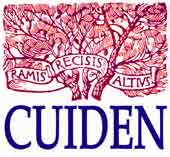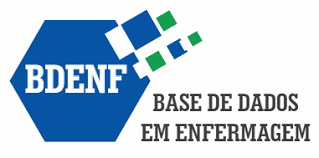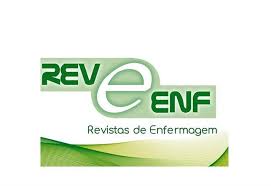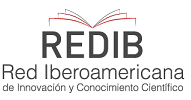Intervención educativa virtual sobre anemia en gestantes
Virtual educational intervention on anemia for pregnant women
Intervenção educativa virtual sobre anemia em gestantes
DOI:
https://doi.org/10.15446/av.enferm.v40n3.103792Palabras clave:
Anemia Ferropénica, Conocimiento, Mujeres Embarazadas, Educación prenatal (es)Iron deficiency anemia, Knowledge, Pregnant women, Intervention (en)
Anemia por deficiência de ferro, Conhecimento, Mulheres grávidas, Intervenção educativa (pt)
Descargas
Objetivo: evaluar la efectividad de una intervención educativa virtual en los conocimientos sobre la anemia ferropénica en gestantes.
Materiales y método: estudio preexperimental pretest-postest mono grupo, realizado en un centro de salud ubicado en Lima Norte (Perú) con una población de 30 gestantes. Después del pretest se planificó y realizó la intervención educativa usando medios digitales y videoconferencia. Luego de dos semanas se aplicó el postest. La prueba de Kolmogorov-Smirnov fue empleada para determinar la distribución de normalidad de la variable conocimientos sobre anemia ferropénica. Posteriormente, se aplicó estadística descriptiva para evaluar las características sociodemográficas y obstétricas y estadística inferencial para comprobar la hipótesis de la investigación mediante la prueba t de Student pareada.
Resultados: la media de edad fue de 27,33 años y el 43,33 % de la muestra presentó anemia. Asimismo, la mayoría de las participantes reportó haber alcanzado la educación secundaria (60 %), no contar con una ocupación remunerada (66,67 %), encontrarse en el segundo trimestre de embarazo (63,33 %), haber asistido solo a dos controles prenatales (50 %) y tener más de un hijo (60 %). Se observó un aumento de los conocimientos sobre la anemia ferropénica después de la intervención (media de la diferencia: 2,1 puntos, p < 0,001). De igual forma, se observó un aumento de puntaje en las dimensiones sobre las generalidades de la anemia, sus consecuencias y una alimentación saludable.
Conclusiones: la intervención educativa virtual es efectiva en el aumento de conocimientos sobre anemia ferropénica de las gestantes. Por lo tanto, se recomienda que de manera habitual el profesional de enfermería aplique esta intervención en una población más amplia de gestantes.
Objective: To evaluate the effectiveness of a virtual educational intervention on the knowledge regarding iron deficiency anemia in pregnant women.
Materials and method: Pre-experimental pretest-posttest monogroup study carried in a health center in North Lima (Peru) with a population of 30 pregnant women. After the pretest, the educational intervention was planned and conducted using digital media and videoconference. After two weeks, the posttest was applied. The Kolmogorov-Smirnov test was used to determine the normal distribution of the variable knowledge about iron deficiency anemia. Subsequently, descriptive statistics were applied to evaluate participants’ sociodemographic and obstetric characteristics, and inferential statistics to test the research hypothesis using the paired Student's t-test.
Results: Participants’ mean age was 27.33 years and 43.33% of them reported anemia. Most of the individuals in the sample had secondary education (60%), did not have a remunerative occupation (66.67%), were in the second trimester of pregnancy (63.33%), had attended only two prenatal controls (50%), and had more than one child (60%). An increase in knowledge about iron deficiency anemia was observed after the intervention (mean difference: 2.1 points, p < 0.001). Similarly, an increase in scores was observed in the dimensions of generalities of anemia, its consequences, and healthy eating habits.
Conclusions: The virtual educational intervention is effective in increasing knowledge about iron deficiency anemia in pregnant women. Therefore, it is recommended that nursing professionals consistently apply this intervention to a broader population of pregnant women.
Objetivo: avaliar a eficácia de uma intervenção educativa virtual sobre o conhecimento da anemia por deficiência de ferro em mulheres grávidas.
Materiais e método: estudo pré-experimental, pré e pós-teste, num único grupo, realizado num centro de saúde localizado no norte de Lima, Peru. A população
consistiu em 30 mulheres grávidas. Após o pré-teste, a intervenção educacional foi planejada e realizada com a utilização de meios digitais e videoconferência. Após algumas semanas, o pós-teste foi aplicado. O teste Kolmogorov-Smirnov foi utilizado para determinar a distribuição de normalidade da variável “conhecimento da anemia por deficiência de ferro”. Posteriormente, aplicaram-se a estatística descritiva para avaliar as características sociodemográficas e obstétricas, e a estatística inferencial para testar a hipótese de pesquisa por meio do teste t de Student pareado.
Resultados: a idade média foi de 27,33 anos e 43,33% esteve anêmica. Além disso, a maioria teve estudos secundários (60%), não teve qualquer ocupação remunerada (66,67%), esteve no segundo trimestre de gravidez (63,33%), frequentou apenas dois exames pré-natais (50%) e teve mais do que um filho (60%). Houve um aumento no conhecimento da anemia por deficiência de ferro após a intervenção (diferença média: 2,1 pontos, p < 0,001). Do mesmo modo, observou-se um aumento das pontuações nas dimensões “generalidades da anemia”, “consequências” e “alimentação saudável”.
Conclusões: a intervenção educativa virtual é eficaz no aumento do conhecimento da anemia por deficiência de ferro em mulheres grávidas. Portanto, recomenda-se que o profissional de enfermagem aplique regularmente essa intervenção a uma população mais ampla de gestantes.
Referencias
(1) Pavord S; Hunt B. The obstetric hematology manual. 2a ed. New York: Cambridge University Press; 2018. https://doi.org/10.1017/9781316410837 DOI: https://doi.org/10.1017/9781316410837
(2) Organización Mundial de la Salud (OMS). Concentraciones de hemoglobina para diagnosticar la anemia y evaluar su gravedad. Ginebra: OMS; 2011. https://bit.ly/3hwaEjK
(3) World Health Organization (WHO). Worldwide prevalence of anemia 1993-2005. Ginebra: WHO; 2008. https://bit.ly/3HKFakV
(4) Grupo Banco Mundial. Prevalencia de anemia entre embarazadas (%) - Sub-Saharan Africa. Washington D.C.: GBM; 2021. https://datos.bancomundial.org/indicador/sh.prg.anem?locations=ZG
(5) Grupo Banco Mundial. Prevalencia de anemia entre embarazadas (%) - Latin America & Caribbean. Washington D.C.: GBM; 2021. https://datos.bancomundial.org/indicador/SH.PRG.ANEM?locations=ZJ
(6) Instituto Nacional de Estadística e Informática (INEI ). Perú. Encuesta demográfica y de salud familiar ENDES 2020. Lima: INEI ; 2020. https://bit.ly/3V3FvlF
(7) Balarajan Y; Ramakrishnan U; Özaltin E; Shankar AH; Subramanian SV. Anaemia in low-income and middle-income countries. Lancet. 2011;378(9809):2123-2135. https://doi.org/10.1016/S0140-6736(10)62304-5 DOI: https://doi.org/10.1016/S0140-6736(10)62304-5
(8) Minaya-León P; Ayala-Peralta F; Gonzales-Medina C; Racchumí-Vela AE. Situación y determinantes sociales de la anemia en gestantes peruanas según distribución geográfica 2016-2017. Rev Peru Investig Matern Perinat. 2019;8(1):23-29. https://doi.org/10.33421/inmp.2019139 DOI: https://doi.org/10.33421/inmp.2019139
(9) Bereka SG; Gudeta AN; Reta MA; Ayana LA. Prevalence and associated risk factors of anemia among pregnant women in rural part of JigJiga city, eastern Ethiopia: A cross sectional study. J Preg Child Health. 2017;4(337):2-7. https://bit.ly/3HVgLJv
(10) Mohamed NEB; Hassan RHA. Prevalence and factors associated with anemia among pregnant women attending ante-natal clinic in the second and third trimesters at Soba University Hospital, Khartoum State, Sudan (2018-2019). Int J Health Sci Res. 2020;10(8):195-204. https://www.ijhsr.org/IJHSR_Vol.10_Issue.8_Aug2020/32.pdf
(11) Adebo AA; Yessoufou AG; Kpanou CM; Bouko MB; Soumanou MM; Sezan A. Anémie et facteurs associés chez les gestantes reçues en consultation au Centre de Santé d’Ekpè (Sud du Bénin). Antropo. 2018(40):35-41. https://dialnet.unirioja.es/servlet/articulo?codigo=7515740
(12) Gudeta TA; Regassa TM; Belay AS. Magnitude and factors associated with anemia among pregnant women attending antenatal care in Bench Maji, Keffa and Sheka zones of public hospitals, Southwest, Ethiopia, 2018: A cross-sectional study. PloS One. 2019;14(11):e0225148. https://doi.org/10.1371/journal.pone.0225148 DOI: https://doi.org/10.1371/journal.pone.0225148
(13) Ortiz Montalvo YJ; Ortiz Romaní KJ; Castro Trujillo BS; Nuñez Revilla SC; Rengifo Balta GL. Factores sociodemográficos y prenatales asociados a la anemia en gestantes peruanas. Enferm glob. 2019;18(4):273-290. https://doi.org/10.6018/eglobal.18.4.358801 DOI: https://doi.org/10.6018/eglobal.18.4.358801
(14) Munares-García O; Gómez-Guizado G. Anemia en gestantes con y sin talla baja. Rev Cub Salud Pública. 2018;44(1):14-26. https://www.scielosp.org/article/rcsp/2018.v44n1/14-26/#
(15) Cisneros-Rojas EP; Lázaro-Tacuchi MC. Factores asociados a anemia en la gestación en Huánuco, 2018. Rev Peru Investig Salud. 2019;3(2):68-75. https://doi.org/10.35839/repis.3.2.262 DOI: https://doi.org/10.35839/repis.3.2.262
(16) Rincón-Pabón D; Urazán-Hernández Y; Gonzalez-Santamaria J. Prevalencia y factores sociodemográficos asociados a anemia ferropénica en mujeres gestantes de Colombia (análisis secundario de la ENSIN 2010). Nutr Hosp. 2019;36(1):87-95. https://doi.org/10.20960/nh.1895 DOI: https://doi.org/10.20960/nh.1895
(17) Ortiz Romaní KJ; Ortiz Montalvo YJ; Escobedo Encarnación JR; Neyra de la Rosa L; Jaimes Velásquez CA. Análisis del modelo multicausal sobre el nivel de la anemia en niños de 6 a 35 meses en Perú. Enferm glob. 2021;20(4):426-455. https://doi.org/10.6018/eglobal.472871 DOI: https://doi.org/10.6018/eglobal.472871
(18) Allen LH. Anemia and iron deficiency: Effects on pregnancy outcome. Am J Clin Nutr. 2000;71(5):1280S-1284S. https://doi.org/10.1093/ajcn/71.5.1280s DOI: https://doi.org/10.1093/ajcn/71.5.1280s
(19) Loboa-Rodríguez NJ; Betancurth-Loaiza DP. El educador para la salud en la salud pública. Rev Salud Pública. 2020;22(5):556-559. https://doi.org/10.15446/rsap.v22n5.87075 DOI: https://doi.org/10.15446/rsap.v22n5.87075
(20) Ibert-Muñoz C; Labrada-Vidal CB; González-Medina KG; Muñoz-Callol JL. Intervención educativa para prevenir la Anemia Ferropénica gestacional. EsTuSalud. 2021;3(2):1-11. http://revestusalud.sld.cu/index.php/estusalud/article/view/63
(21) Kamau M; Mirie W; Kimani S; Mugoya I. Effect of community based health education on knowledge and attitude towards iron and folic acid supplementation among pregnant women in Kiambu County, Kenya: A quasi experimental study. PLoS ONE . 2019;14(11):e0224361. https://doi.org/10.1371/journal.pone.0224361 DOI: https://doi.org/10.1371/journal.pone.0224361
(22) Ministerio de Salud de Perú. Prioridades nacionales de investigación en salud en Perú 2019-2023. Lima: MINSA; 2019. https://bit.ly/3WjRH2D
(23) Pacheco-Romero J. Pasos adelante y hacia atrás en la pandemia de COVID -19. Rev Peru Ginecol Obstet. 2020;66(3):1-3. http://www.scielo.org.pe/pdf/rgo/v66n3/2304-5132-rgo-66-03-00001.pdf DOI: https://doi.org/10.31403/rpgo.v66i2272
(24) Ortiz Romaní KJ; Vásquez Carbajal AM; Escobedo Encarnación JR; Ortiz Montalvo YJ. Efecto de una intervención educativa virtual para promover el inicio temprano de la lactancia materna en embarazadas de Lima, Perú. Enfermeria (Montev.). 2022;11(2);e2820. https://doi.org/10.22235/ech.v11i2.2820 DOI: https://doi.org/10.22235/ech.v11i2.2820
(25) Ministerio de Salud de Perú. Rotafolio suplementación con micronutrientes. Lima: MINSA ; 2015. https://bit.ly/3VYe11Y
(26) Ministerio de Salud de Perú. Directiva Sanitaria que establece las disposiciones para garantizar las prestaciones de prevención y control de la anemia en el contexto del COVID -19. Lima: MINSA; 2020. http://bit.ly/3Pxlhzl
(27) Londoño Ocampo LP. La atención: un proceso psicológico básico. Pensando Psicología. 2009;5(8):91-100. https://bit.ly/3HJpjTt
(28) San Gil Suárez CI; Villazán Martín C; Ortega San Gil Y. Caracterización de la anemia durante el embarazo y algunos factores de riesgo asociados, en gestantes del municipio regla. Rev Cubana Med Gen Integr. 2013;30(1):71-81. https://bit.ly/3WE4HR1
(29) Polanco-Rosales A; Labrada-Gómez N; Martínez-Fonseca B; Urquiza-Cedeño L; Figueredo-González L. Efectividad de un programa educativo sobre anemia ferropénica en gestantes. Consultorio 12. Siboney. Bayamo. Multimed. 2020;24(1):70-83. http://www.revmultimed.sld.cu/index.php/mtm/article/view/1499
(30) Ataguba OA; Ataguba JE. Social determinants of health: The role of effective communication in the COVID -19 pandemic in developing countries. Glob Health Action. 2020;13(1):1788263. https://doi.org/10.1080/16549716.2020.1788263 DOI: https://doi.org/10.1080/16549716.2020.1788263
(31) Gebremedhin S; Samuel A; Mamo G; Moges T; Assefa T. Coverage, compliance and factors associated with utilization of iron supplementation during pregnancy in eight rural districts of Ethiopia: A cross-sectional study. BMC Public Health. 2014;14(607):1-8. https://doi.org/10.1186/1471-2458-14-607 DOI: https://doi.org/10.1186/1471-2458-14-607
(32) Abujilban S; Hatamleh R; Al-Shuqerat S. The impact of a planned health educational program on the compliance and knowledge of Jordanian pregnant women with anemia. Women Health. 2019;59(7):748-759. https://doi.org/10.1080/03630242.2018.1549644 DOI: https://doi.org/10.1080/03630242.2018.1549644
(33) Kyaw BM; Saxena N; Posadzki P; Vseteckova J; Nikolaou CK; George PP et al. Virtual reality for health professions education: Systematic review and meta-analysis by the digital health education collaboration. J Med Internet Res. 2019;21(1):e12959. http://doi.org/10.2196/12959 DOI: https://doi.org/10.2196/12959
(34) Khani Jeihooni A; Rakhshani T; Harsini PA; Layeghiasl M. Effect of educational program based on theory of planned behavior on promoting nutritional behaviors preventing Anemia in a sample of Iranian pregnant women. BMC Public Health. 2021;21:2198. https://doi.org/10.1186/s12889-021-12270-x DOI: https://doi.org/10.1186/s12889-021-12270-x
(35) Doaltabadi Z; Amiri-Farahani L; Hasanpoor-Azghady SB; Haghani S. The effect of face-to-face and virtual prenatal care training of spouses on the pregnancy experience and fear of childbirth of primiparous women: A controlled quasi-experimental study. J Telemed Telecare. 2021. https://doi.org/10.1177/1357633X211024101 DOI: https://doi.org/10.1177/1357633X211024101
(36) Ouzennou N; Tikert K; Belkedim G; Jarhmouti FE; Baali A. Prévalence et déterminants sociaux de l’anémie chez les femmes enceintes dans la Province d’Essaouira, Maroc. Santé Publique. 2018;30(5):737-745. https://doi.org/10.3917/spub.186.0737 DOI: https://doi.org/10.3917/spub.186.0737
(37) Villalva-Luna JL; Villena PJJ. Relación entre gestantes con anemia en edad materna de riesgo y bajo peso al nacer en un hospital de la seguridad social del Perú. Rev Fac Med Hum. 2021;21(1):101-107. http://doi.org/10.25176/rfmh.v21i1.3155 DOI: https://doi.org/10.25176/RFMH.v21i1.3155
(38) Inca CV. Niveles de hemoglobina y funcionalidad familiar en gestantes del sur de Lima, Perú. Rev Int Salud Matern Fetal. 2018;3(2):3-7. http://ojs.revistamaternofetal.com/index.php/RISMF/article/view/43
(39) Soto RJ. Factores asociados a anemia en gestantes hospitalizadas del Hospital San José. Rev Peru Investig Matern Perinat. 2020;9(2):31-33. https://doi.org/10.33421/inmp.2020203 DOI: https://doi.org/10.33421/inmp.2020203
(40) Helion Belay AM; Tariku A; WoretaSA; Demissie GD; Asrade G. Anemia and associated factors among pregnant women attending prenatal care in rural Dembia district, North West Ethiopia: A crosssectional study. Ecol Food Nutr. 2020;59(2):154-174. https://doi.org/10.1080/03670244.2019.1680551 DOI: https://doi.org/10.1080/03670244.2019.1680551
(41) Gaspar Alvarado SB; Luna Figuero AM; Carcelén Reluz CG. Anemia en madres adolescentes y su relación con el control prenatal. Rev Cubana Pediatr. 2022;94(3):e1931. https://bit.ly/3uWYZhg
(42) Haas S; Ghossein-Doha C; van Kuijk SMJ; van Drongelen J; Spaanderman MEA. Physiological adaptation of maternal plasma volume during pregnancy: A systematic review and meta-analysis. Ultrasound Obstet Gynecol. 2017;49(2):177-187. https://doi.org/10.1002/uog.17360 DOI: https://doi.org/10.1002/uog.17360
Cómo citar
VANCOUVER
ACM
ACS
APA
ABNT
Chicago
Harvard
IEEE
MLA
Turabian
Descargar cita
Licencia
Derechos de autor 2022 Carla Gabriela Ticona Cazorla, Katherine Jenny Ortiz Romaní, Yonathan Josué Ortiz Montalvo

Esta obra está bajo una licencia internacional Creative Commons Atribución-NoComercial 4.0.
Todos los artículos publicados por Avances en Enfermería están licenciados bajo la Licencia Internacional Creative Commons Attribution 4.0. A partir del año 2020 adicionamos a la licencia el reconocimiento CC-BY-NC en la cual se permite a cualquier persona copiar, redistribuir, remezclar, transmitir y adaptar el trabajo de manera no comercial, y aunque sus nuevos trabajos deben citar adecuadamente la obra original y la fuente y deben ser no comerciales, no tienen que licenciar sus trabajos derivados en los mismos términos.

























